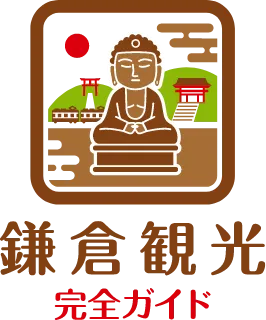Autumn Leaves at Myoho-ji Temple (妙法寺)
Discover the Autumn Leaves at Myoho-ji Temple (妙法寺)
Nestled in Kamakura’s Omachi district, Myoho-ji Temple is affectionately known as the “Moss Temple” for its carpet of green moss and tranquil atmosphere. The contrast between the mossy stone steps and the autumn maples makes it one of Kamakura’s most enchanting hidden spots.
Compared to busy temples like Hase-dera Temple (長谷寺) or Tsurugaoka Hachimangu Shrine (鶴岡八幡宮), Myoho-ji offers a peaceful retreat perfect for those seeking quiet beauty.
Around the Nio-mon Gate and the main hall, brilliant maples glow in shades of red and gold, creating a beautiful contrast with the moss-covered stones. During morning and late-afternoon sunlight, the interplay of green moss and fiery foliage forms a mesmerizing, painterly scene.
When Is the Best Time to Visit?
Myoho-ji’s autumn leaves appear later than in most of Kamakura, with the peak season from mid to late December. Depending on the weather, some colors linger into the New Year — offering one of the rare late-autumn maple experiences in the city.
Please note that from December to March, the temple is open only on weekends and national holidays. Arriving early on a crisp winter morning allows you to enjoy the beauty in near silence.
Photo Highlights and Must-See Spots
The most iconic view at Myoho-ji is the sight of the maple trees framed by the red Nio-mon Gate and the mossy stone steps. The vivid red leaves, golden light, and deep green moss create a stunning harmony that feels like a Japanese painting.
At the top of the stone staircase lies the tomb of Prince Morinaga (護良親王), a historical site that also offers panoramic views of Kamakura, Yuigahama Beach, and even Mt. Fuji on clear days.
During the peak season, fallen ginkgo leaves sometimes form a golden carpet across the moss — another breathtaking scene unique to this temple.
Embrace the Quiet Hours of Morning
What makes Myoho-ji truly special is not only its color but its tranquility. Opening at 9:30 a.m., it is best visited in the early morning when the air is cool and still.
Removed from the city’s bustle, the temple provides a meditative space where you can hear birdsong, feel the crisp air, and watch sunlight gently illuminate the moss.
How to Get There from Tosh’s Place (トシズプレイス)
Myoho-ji Temple is about a 20-minute walk from Kamakura Station. Guests staying at Tosh’s Place can easily plan a relaxing morning stroll to the temple on weekends when it’s open.
Tosh’s Place — a self-catering, fully automated smart hotel — is perfect for flexible travel. Visiting on a quiet weekend morning lets you experience the full beauty of Kamakura’s late autumn.
Nearby temples such as Ankoku-ron-ji Temple (安国論寺), Chosho-ji Temple (長勝寺), and Myohon-ji Temple (妙本寺) also offer beautiful autumn foliage, ideal for a historical temple-hopping walk.
Wrap-Up: A Local Way to Experience Kamakura’s Late Autumn
The autumn scenery of Myoho-ji Temple — where moss and maple coexist in tranquil harmony — represents Kamakura’s most poetic season.
By staying at Tosh’s Place, you can take your time to enjoy the temple’s quiet charm and discover the gentle beauty of Kamakura’s late autumn.
In the stillness of moss and color, you’ll find a moment of true peace.
Toshi’s Evaluation (2025)
| Evaluation Item | Score | Reason |
|---|---|---|
| Scenery | 9 | Moss-covered stone steps, the historic main hall and Niomon gate harmonize beautifully with red maple and yellow ginkgo leaves. The view from the steps and the hilltop is especially impressive. While there aren’t large numbers of autumn leaves, the serene atmosphere emphasizes the feeling of fall. |
| Accessibility | 7 | About a 20-minute walk from Kamakura Station. It takes 5 minutes from the nearest bus stop, but the route includes slopes and stone steps that may feel a bit inconvenient for some visitors. |
| History | 8 | Founded in the 14th century as a Nichiren-shū temple with high historical value in Kamakura. Known locally as “Kokedera” (the moss temple), but not particularly famous nationwide. |
| Comfort | 9 | Remains quiet and largely uncongested even during autumn. Facilities such as benches and restrooms are well maintained, making visits comfortable. |
| Reviews | 8 | Online reviews average 4.5-4.6, indicating high satisfaction. Many praise the tranquility, scenery, and unique atmosphere—though some wish for better access. |
Total Score: 41
The moss-covered steps and autumn leaves around the main hall offer a hidden scenic view appreciated by those in the know. The quiet grounds make it an ideal spot for slow enjoyment, and any minor inconvenience in getting there is well worth it.
